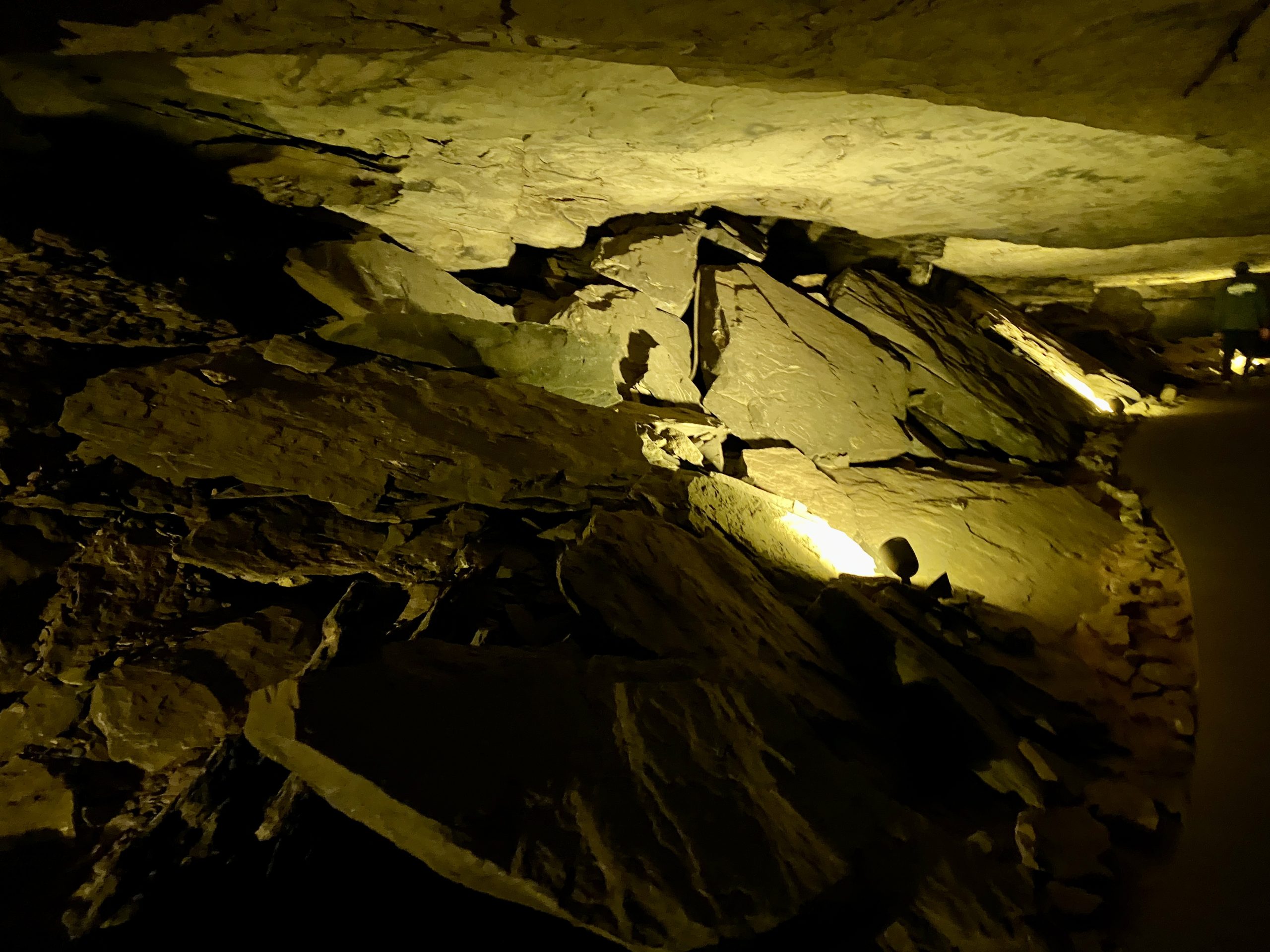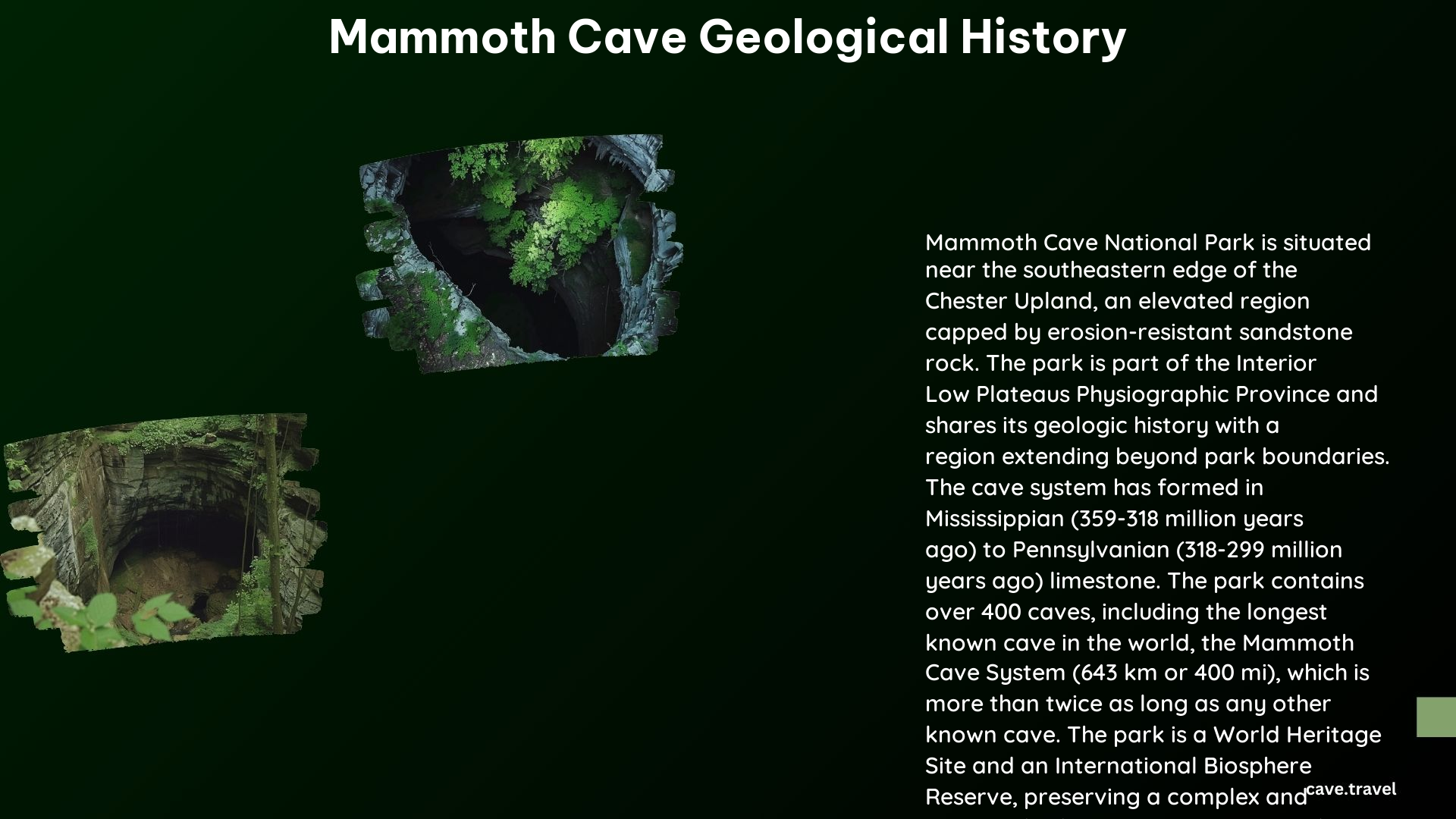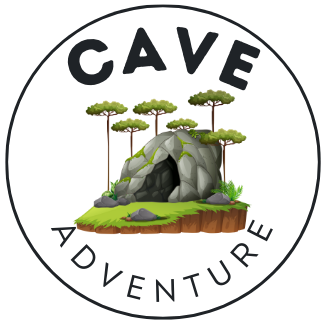Mammoth Cave, located in Kentucky, is a vast and complex cave system that has captivated the imagination of explorers and geologists for centuries. Its rich geological history, spanning millions of years, has shaped the unique landscape and features that make it a true natural wonder.
Age of Rocks

The rocks in which Mammoth Cave is formed date back to the Mississippian Period, approximately 359 to 318 million years ago. This limestone was formed from the mineral matter in the sea water and the shells and other parts of animals and plants that lived there during that time.
Formation of the Cave

The cave itself was formed much later than the rocks, through the slow dissolution of limestone by groundwater. This process, known as karst topography, created sinkholes, tunnels, and underground rivers over millions of years. The groundwater, mildly acidic due to carbon dioxide, reacted with the limestone to form the intricate cave system we see today.
Karst Topography
The Mammoth Cave area is characterized by karst topography, which includes sinkholes, sinking streams, caves, and other features formed by the dissolution of soluble rocks like limestone. This unique landscape was shaped over millions of years through geological processes, creating the diverse and fascinating features that draw visitors from around the world.
Geological Processes
The cave system is still actively forming, with groundwater continuing to dissolve the limestone and create new passageways. The Green River, which runs through the park, has deeply carved and entrenched itself in its valley, contributing to the ongoing formation of the cave system.
Fossil Remains
Fossil remains can be found in the rocks of the area, providing evidence of the region’s ancient history. These fossils include remains of animals and plants that lived in the sea that once covered the area, offering a glimpse into the past and the evolution of life in this remarkable region.
Geological Significance
Mammoth Cave National Park is a designated UNESCO World Heritage Site and an International Biosphere Reserve, recognizing its unique geological features and the importance of preserving this natural wonder for future generations. The park’s geological significance extends far beyond its boundaries, as it is part of the larger Interior Low Plateaus Physiographic Province.
Exploration and Discovery
The cave has been explored by humans for thousands of years, with evidence of prehistoric peoples visiting the cave around 4,000 years ago. The cave was rediscovered in 1798 and has since become a popular tourist attraction, with over 365 miles of surveyed passageways waiting to be explored.
Geological Features
The park contains over 400 caves, including the longest known cave in the world, the Mammoth Cave System, which spans over 643 kilometers (400 miles). The cave system is home to a diverse range of cave-adapted creatures, including several endangered species, adding to the geological and ecological significance of this remarkable place.
Preservation Efforts
The National Park Service and other organizations work tirelessly to preserve the natural systems of Mammoth Cave National Park, including protecting the region’s air and watersheds, which are essential for maintaining the integrity of the cave ecosystem. These efforts ensure that the geological wonders of Mammoth Cave will continue to be enjoyed by generations to come.
Maps and Reports
The National Park Service provides detailed maps and reports on the geology of Mammoth Cave National Park, including digital geologic maps, scoping summaries, and reports on geologic features and processes. These resources are invaluable for those seeking to deepen their understanding of the park’s geological history and features.
Related Links
For more information on Mammoth Cave National Park and its geological history, visit the National Park Service’s Geodiversity Atlas and related articles.
References
- Kentucky Geological Survey. (1962). Geology of the Mammoth Cave National Park Area. University of Kentucky.
- National Park Service. (2021). Geology – Mammoth Cave National Park. Retrieved from https://www.nps.gov/maca/learn/nature/geology.htm
- National Park Service. (n.d.). Mammoth Cave National Park – NPS History. Retrieved from https://npshistory.com/publications/maca/index.htm
- United States Geological Survey. (n.d.). Geology of Mammoth Cave National Park. Retrieved from https://www.usgs.gov/geology-and-ecology-of-national-parks/geology-mammoth-cave-national-park
- National Park Service. (n.d.). NPS Geodiversity Atlas—Mammoth Cave National Park, Kentucky. Retrieved from https://www.nps.gov/articles/nps-geodiversity-atlas-mammoth-cave-national-park-kentucky.htm
